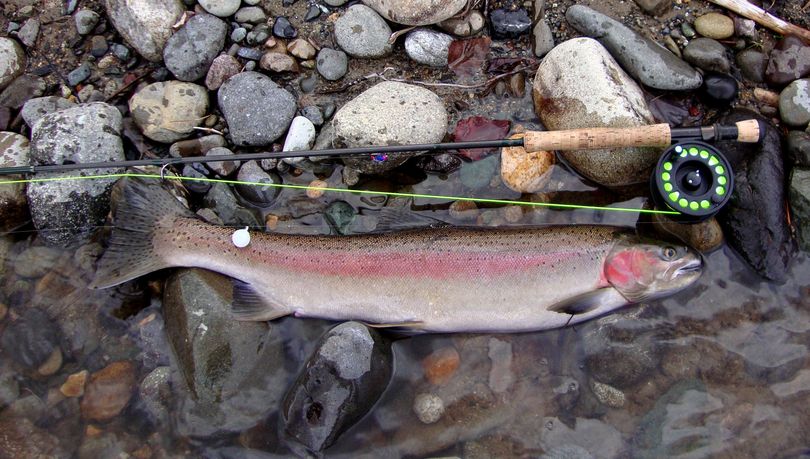Angling for runaway triploid trout opens below Chief Joseph Dam

FISHING -- Triploid trout that escaped a comercial net pens upstream in Lake Rufus Woods are creating a new fishery and a rare opportunity to harvest huge rainbows starting today (Monday) on a 17-mile stretch of the Columbia River between Bridgeport and Brewster, Wash.
From Aug. 1-31, anglers will be allowed to catch and keep triploid rainbow trout in the mainstem Columbia River from the Highway 173 Bridge in Brewster to the Highway 17 Bridge in Bridgeport, under a new regulation issued by the Washington Department of Fish and Wildlife.
The target of the fishery is a large number of triploid trout that escaped from a net-pen facility on Rufus Woods Reservoir in June and have passed downstream into the Wells pool area below Chief Joseph Dam, said Jeff Korth, the agency's fisheries manager in Ephrata.
Anglers must know the difference between triploid rainbows and steelhead, which must be released. The long, slender fish with the properly proportioned head pictured above is a steelhead. The triploid rainbows (left) have large, rotund bodies with proportionally small heads.
Pacific Seafoods, which owns the net-pen facility, estimates that 117,500 triploids escaped in June through a breach in a net-pen. Many of those fish run 4 to 5 pounds apiece, Korth said.
“Anglers have been catching those fish in Rufus Woods Reservoir for the past couple of months, which is great,” he said. “But we do have some concerns about the growing number of triploids turning up below Chief Joseph Dam, because they could interfere with juvenile steelhead downstream.”
Read on for more details.
Korth said the triploids are “voracious” eaters and could pose a threat to juvenile steelhead, some of which are listed for protection under the federal Endangered Species Act.
Under the new rule, the daily limit will be four triploid rainbow trout, with a minimum size 12 inches. All steelhead must be released, and must not be completely removed from the water.
Most steelhead do not start arriving in the area until September, but Korth said anglers should be aware of the differences between a steelhead and a triploid rainbow trout.
Signs will be posted at all boat launches that list distinguishing features of the two types of fish. The fishery will be heavily monitored, Korth said.
“The differences are pretty obvious,” he said. “Triploids are big and fat, while steelhead are long and skinny. But if there’s any doubt, anglers should release the fish back into the water.”

